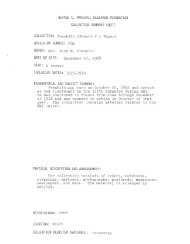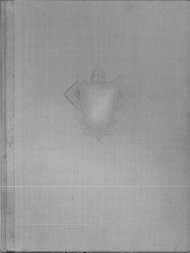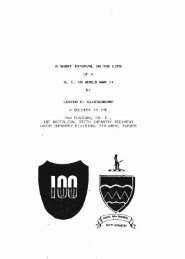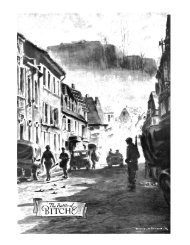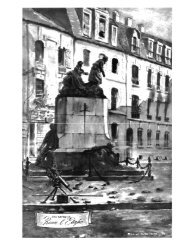Joint Operating Concept (JOC) - GlobalSecurity.org
Joint Operating Concept (JOC) - GlobalSecurity.org
Joint Operating Concept (JOC) - GlobalSecurity.org
You also want an ePaper? Increase the reach of your titles
YUMPU automatically turns print PDFs into web optimized ePapers that Google loves.
neither spoke Korean nor understood their culture. This seriously influenced<br />
the ability of UN partisan forces to undertake IW actions more complicated than<br />
episodic raids-in-force.<br />
US Unconventional Warfare in North Vietnam (1964 - 1972). With few<br />
possible exceptions, US UW efforts in North Vietnam were among the least<br />
successful of any it has attempted. According to two respected scholars, US UW<br />
efforts failed because of “Lack of imagination in planning, faulty execution of<br />
missions, and poor operational security.” 34 Although originally planned and<br />
controlled by the CIA in 1960, responsibility for UW activities was shifted to the<br />
Department of Defense in 1964. Most of the activities conducted subsequently<br />
in Northern Vietnam bore a striking similarity to missions conducted by the<br />
Office of Strategic Services during the Second World War. These missions<br />
included parachuting lone Vietnamese agents, or teams of agents, deep into<br />
North Vietnam to gather and report intelligence or conduct attacks. Maritime<br />
missions included short-term seaborne raids, agent insertion, and deception and<br />
psychological warfare operations. Such UW was designed to distract North<br />
Vietnamese attention as well as resources to combating saboteurs operating in<br />
their homeland. The results of these UW efforts were dismal. The fact that such<br />
operations continued despite persistent evidence of their failure is a testament to<br />
the lack of imagination mentioned above, as well as the bravery of most of the<br />
Vietnamese volunteers. The inability of US planners to set meaningful strategic<br />
and operational objectives for UW and use such forces haphazardly in an<br />
uncoordinated manner simply because the option existed, without any hope of<br />
generating support among the local populous, ultimately doomed such efforts.<br />
US Unconventional Warfare in South Vietnam (1967 - 1972). The<br />
successful US-led UW efforts in South Vietnam had its genesis in the Mike Force<br />
and Mobile Strike Force concepts, which were initially corps-level reserve forces<br />
designed to react quickly to contingencies such as Viet Cong attacks on Special<br />
Forces or Civilian Irregular Defense Group camps. Instead of responding to the<br />
adversary and ceding the local initiative to them, the newly developed Mobile<br />
Guerrilla Force would operate autonomously for extended periods of time to take<br />
the fight to areas of South Vietnam controlled by the Viet Cong. A crucial<br />
difference between the Mobile Guerrilla Forces and their predecessors was<br />
operational control. They were placed directly under the control of the corpslevel<br />
Special Forces commander, as opposed to the conventional corps<br />
commander, in each of the four corps of South Vietnam. The Mobile Guerrilla<br />
Forces were designed for extended operations, including long-range<br />
reconnaissance patrolling and ambushing, to fight the Viet Cong using their own<br />
tactics against them. Comprised of any combination of Vietnamese, Montagnard<br />
(tribal hill peoples), and ethnic Cambodians, these forces were led by US and/or<br />
South Vietnamese Special Forces personnel. <strong>Operating</strong> largely in sparsely<br />
populated areas, the Mobile Guerrilla Forces combined cultural awareness, local<br />
34 Kenneth Conboy and Dale Andradé, Spies and Commandos: How America Lost the Secret War<br />
in North Vietnam (Lawrence, KS: University Press of Kansas, 2000), p. 275.<br />
Appendix G<br />
G-5




